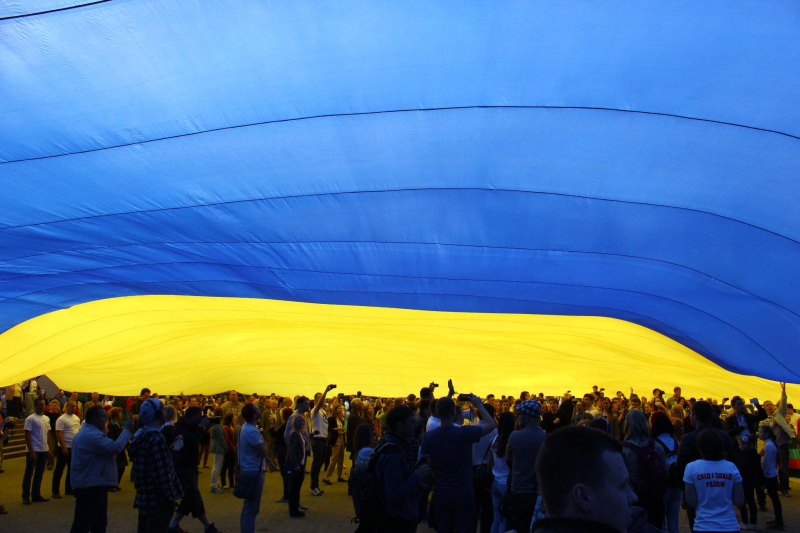
Ukraine was, is and will be/Channel 24
How to correctly determine the historical lands of Ukraine and Ukrainians – from the Xiang to the Don, or still – from the Carpathians to Sakhalin? Russian official information points to the second option.
ShareFbTwiTelegramViberShareFbTwiTelegramViber
Russian propaganda likes to claim that Ukrainians and the Ukrainian language do not exist. As evidence, they give a bunch of stupid arguments. One of the craziest things I've ever heard: the Ukrainian language is just a dialect or “adverb” or a dialect of Russian, because in our country (in the Bryansk, Kursh, Belgorod, Oryol, Voronezh, Kuban regions – it must be emphasized) everyone speaks like that, and we – Russians.
Also, perhaps, you have heard the songs of the Kuban Cossacks or just heard how the inhabitants of the Krasnodar Territory speak. So, dear friends, these are not Russians at all, but Russian Ukrainians, that is, Little Russians.
How is this known? It's simple – this is directly indicated by the results of the census of the Russian Empire, which was conducted in 1897 by the Muscovites themselves.
What kind of population census is this?
< p>At the end of the 19th century, the Russian Empire was considered, albeit a marginal, but still part of the civilized world, it was ruled by the German Romanov dynasty, and the administration of the state was carried out by Europeans – mostly immigrants from German lands, as well as Ukrainians (this trend has been clearly recorded since the 17th century ).
It was progress, not without reason that the Eiffel Tower, the subway, the telephone and the census became its symbols. In Russia, they decided to keep up and hold their own. The eminent geographer Pyotr Semyonov-Tyan-Shansky became the initiator of the census of the empire's population.
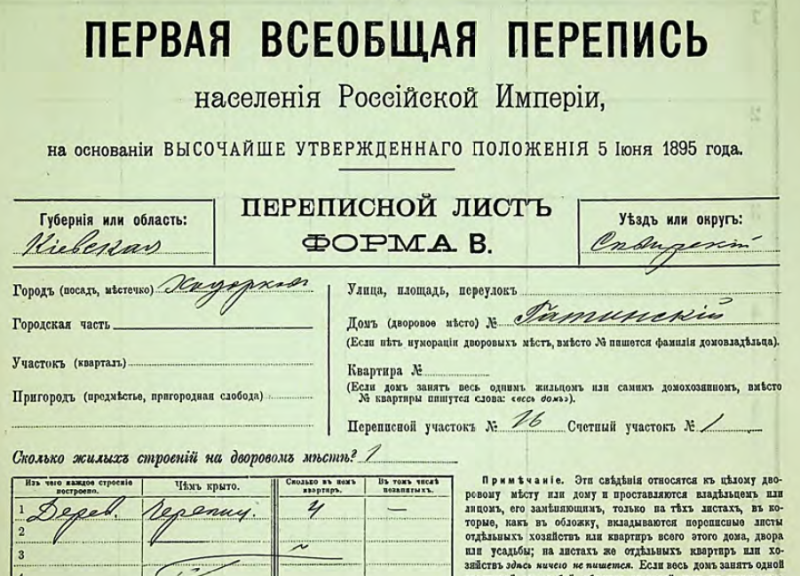
Sheet from the 1897 census letter from the town of Khodorkov, Skvirsky district, Kyiv province/rodovody.com.ua< /p>
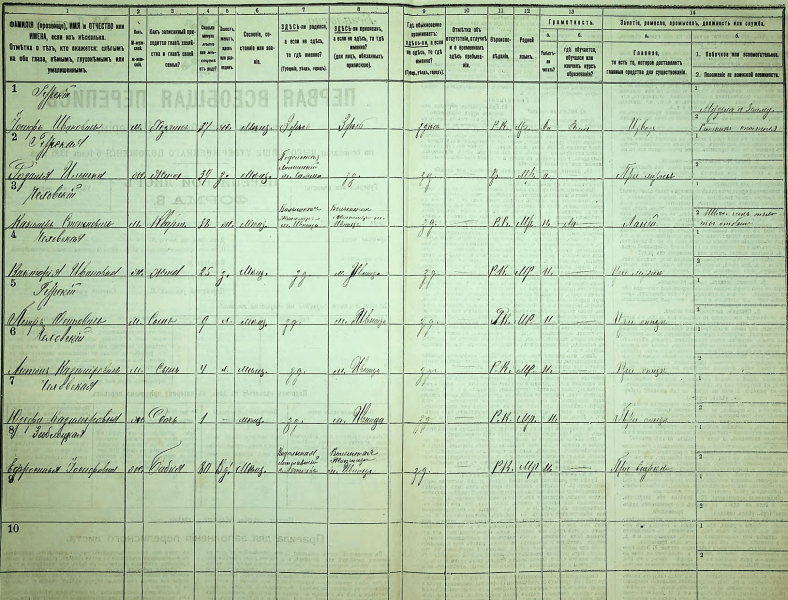
The census was carried out quite qualitatively and thoroughly. There were 14 different items on the census form that determined name, gender, age, marital status, occupation, literacy, and so on. The census of 1897 did not determine the nationality of a person, because in the Russian Empire of that time this concept had not yet acquired general use, instead there were the following points: native language (adverb), place of birth and religion.
What are the results of the census
According to the results of the 1897 census, 125 million 640 thousand 21 people were counted in the Empire. They were native speakers of more than 100 languages.
- In the first place were native speakers of the Russian language (according to the terminology of that time – Russian, they were counted by more than 55.5 million people, i.e 44% of the total population of the Empire.
- The second place was taken by speakers of the Ukrainian (Little Russian in the terminology of that time) language – 22,380,551 people or 17.8% of the total population of the Empire.
Polish speakers accounted for 6.3%, Belarusian 4.7%, Hebrew 4%, Kazakh 3.25%, Tatar almost 3%, German 1.4%, other languages or about 1% or less .
Ukrainian lands in the 19th century were divided between the Russian and Austro-Hungarian empires. The latter conducted its own population censuses – once every 10 years, nationality was determined by religion, there was no question about the native language at all.
Geography of settlement of Ukrainians according to the 1897 census
And now the most interesting thing – where is the 1897 census of the population of the Russian Empire determined the places of compact settlement of Ukrainians.
In addition to specific Ukrainian lands, defined within the boundaries of 1991, there is a large share of the modern territory of the European part of Russia.
Namely…
Kursk Province
Here, the census gives Ukrainians only 22%, however, their absolute majority in Graivoronsky, Novooskolsky and Putivlsky districts, more than a third of the population of Sudzhinsky, Rylsky, Belgorod, Korochensky counties are native speakers of the Ukrainian language.
Voronezh province
36.2% Ukrainians and 63% Russified. By counties: Ostrogozhsky (90.3% of Ukrainians), Bogucharsky (81.8%), Biryuchensky (70.2%), Valuysky (51.1%), Pavlovsky (42%).
Stavropolskaya province
Ukrainian speakers – 37%.
Kuban
In the Kuban (then – the Kuban region), 908,818 native speakers of the Ukrainian language (or 47.4%) and 816,734 (42.6%) native speakers of the Russian language or Russified Ukrainians or representatives of local peoples lived in 7 departments.
As for Russification, this is not an assumption, because the Soviet census of 1926 showed that 915,450 (62.2%) Ukrainians live in the Kuban and only 498,102 (33.8%) Russians. Here is our “Raspberry Wedge”.
Kuban Cossacks. And for two hundred years already… – see an excerpt from a documentary film by Valentyn Sperkach, 1992:
Now less than 100,000 people consider themselves Ukrainians in the Kuban, but the majority of the population may not understand it, but speaks “balachka”, that is, the Ukrainian language defiled by Russian influences.
Donskoy Host Region
28% are Ukrainian speakers. In the Rostov district – 33.6% of Ukrainians, Donetsk – 38.9% (and 60% Russified), Salsky – 29.3%.
The absolute majority of Ukrainians in the Taganrog district.
Ukrainian city of Taganrog, now called Taganrog and part of the Russian Federation, and in 1918 was part of the Hetmanate. According to the 1897 census, 61.7 percent of Ukrainians lived here. Among them is the great Russian writer Chekhov. Yes, he is Ukrainian by origin – he never hid it, he ironically liked to call himself “Khokhlo” in private correspondence.
I was born in the picturesque Ukrainian city of Taganrog, – Anton Pavlovich Chekhov tells about his origin in his autobiography.
In the questionnaire of 1897, Chekhov called his native language “Little Russian”, and how else – after all, he learned “Great Russian” only at school, by the way – Greek.
And what about Crimea
At the end of the 19th century, the peninsula was part of the administrative-territorial composition of the Taurida province. The Tauride province consisted of 8 counties and 2 townships. Three counties (Dniprovsky, Melitopol and Berdyansk) belonged to the mainland, and five belonged to the Crimea itself.
According to the results of the 1897 census, Ukrainians constituted the absolute majority in the mainland and the relative majority in the whole province ( 42.2%.
At the same time, in the peninsular part of the Tauride Governorate, Ukrainians were a minority (about 12%).
The majority were … no, not Russians (there were 33% of them in Crimea and 28% in the province as a whole), but Crimean Tatars – in the region of 35.6%. In addition, according to the census, Germans (6.1%), Greeks (2.3%), Jews and Karaites, Bulgarians, Armenians lived in Crimea.
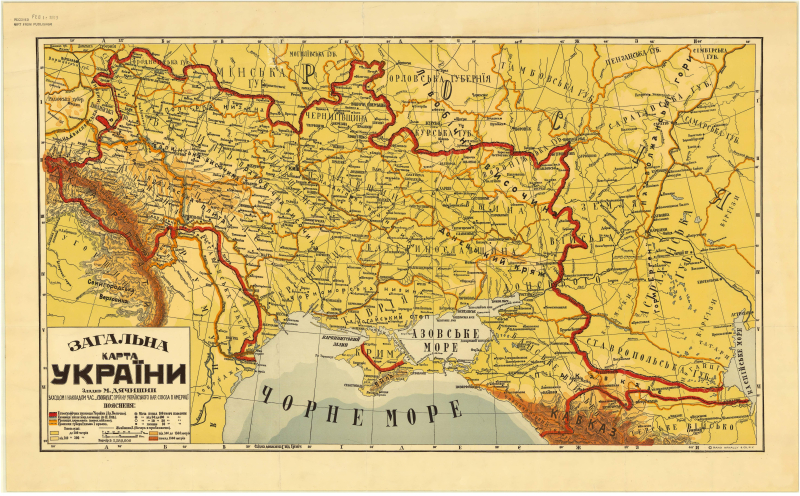
Map of Ukraine in 1918
From the Carpathians to Sakhalin
< p dir="ltr">In addition to the European part of Russia, many Ukrainians live in other parts of the Moscow state. The places of compact settlement of Ukrainians are known as “wedges”.
The already mentioned “Raspberry Wedge” is the Kuban, scientists also distinguish the “Yellow Wedge” – the Volga region, that is, Astrakhan, Volgograd, Saratov and Samara regions, “Green Wedge” – the Far East, and “Grey Wedge” – southwestern Siberia in Russia and northern Kazakhstan.
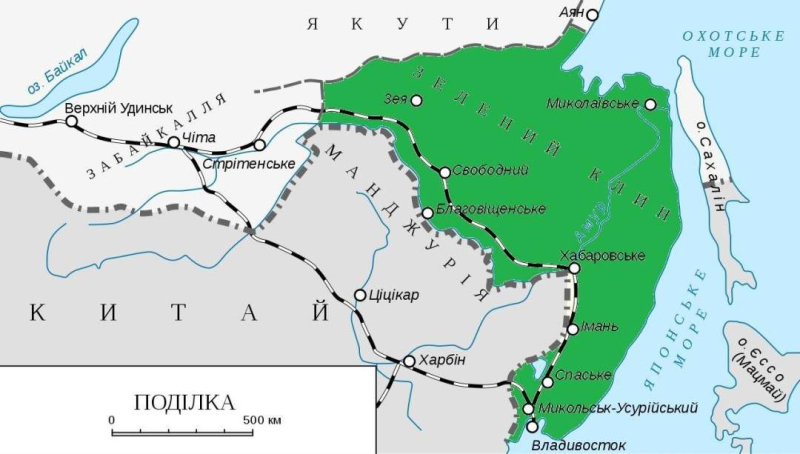
“Raspberry wedge”
A large wave of active settlement of these territories began just at the end of the 19th century, so the census of 1897 does not show the full picture and the real scale. In fact, we are talking about hundreds of thousands of Ukrainian migrants.
Can we trust the results of the census
Large-scale falsifications of the census data are unknown, although the primary materials were destroyed for the most part, however, it should be understood that the 1897 census recorded Russification and assimilation at the moment of the century. Therefore, indicators for the Russian language should be quoted, and for all other languages, they should be considered the minimum indicator.
On the Ukrainian lands, the process of Russification began cautiously at the beginning of the 16th century, when the Ukrainian cities of Starodub, Trubchevsk, Sevsk, Kursk and Bryansk, etc. were under the rule of Moscow, received a new impetus after the Pereyaslav agreements, and with the liquidation of the Hetmanate only intensified.
The consequences of prolonged Russification was the disappearance or “erosion” of entire ethnic groups. For example, the so-called “Russian people” is actually an artificial formation – the former Vespas, Meshcheryaks, Erzya, Muroma, Mordvins and other peoples of the Finno-Ugric group, who were first explained by the Moscow principality, and subsequently the Russian empire forcibly deprived of language and culture and made “Russians”.
They planned the same with other conquered peoples, but somewhere their number interfered, somewhere another religion, and somewhere another race and a completely different worldview. Already in Soviet times, the process of Russification took on new, more stringent forms – the Moscow authorities tried to create a “Soviet man” on the basis of the “Russian man.” This process was interrupted by the destruction of the USSR, but not buried – the Putin regime, under the slogans of the “Russian world”, is trying to complete the work that their predecessors began.

Ukrainian Taganrog on the map of Donetsk province, November 1921/Wikipedia
Centuries of assimilation did not pass without a trace, so many participants in the 1897 census consciously or unconsciously abandoned their native language and indicated the so-called “Great Russian” instead. At that time, for many, this was a winning strategy, because belonging to the titular nationality gave certain advantages (it was at that time that the heroes of Staritsky became Serkovs and Golokhvastovs). Belonging to other than the “Great Russians” did not give any preferences.
Thus, it is quite logical to assume that the real number of “Great Russians”, even if we consider representatives of the enslaved Finno-Ugric peoples as such, was much less, but representatives of other peoples were large.
Indirect evidence of this may be of course, with the amendment, the data of the 1926 census. So, according to her statements, the number of Ukrainians in the Taganrog district was 71.5%, and in 1897 – “only” 61.7%. Since there were no major ethnic cleansings in the region during this period, and the losses from the so-called “civil war” and epidemics were relatively uniform for all peoples, it means that 10% of Ukrainians decided to be honest with themselves and return to their natural position, i.e. e. – renounce “Russianness”. We hope that something similar will happen after the collapse of present-day Russia.
And this is exactly where Putin should come on stage and tell a fairy tale that Ukrainians do not exist, and Ukraine was invented either by Lenin or someone nameless in the Austrian General Staff. Well, have you tried it?

